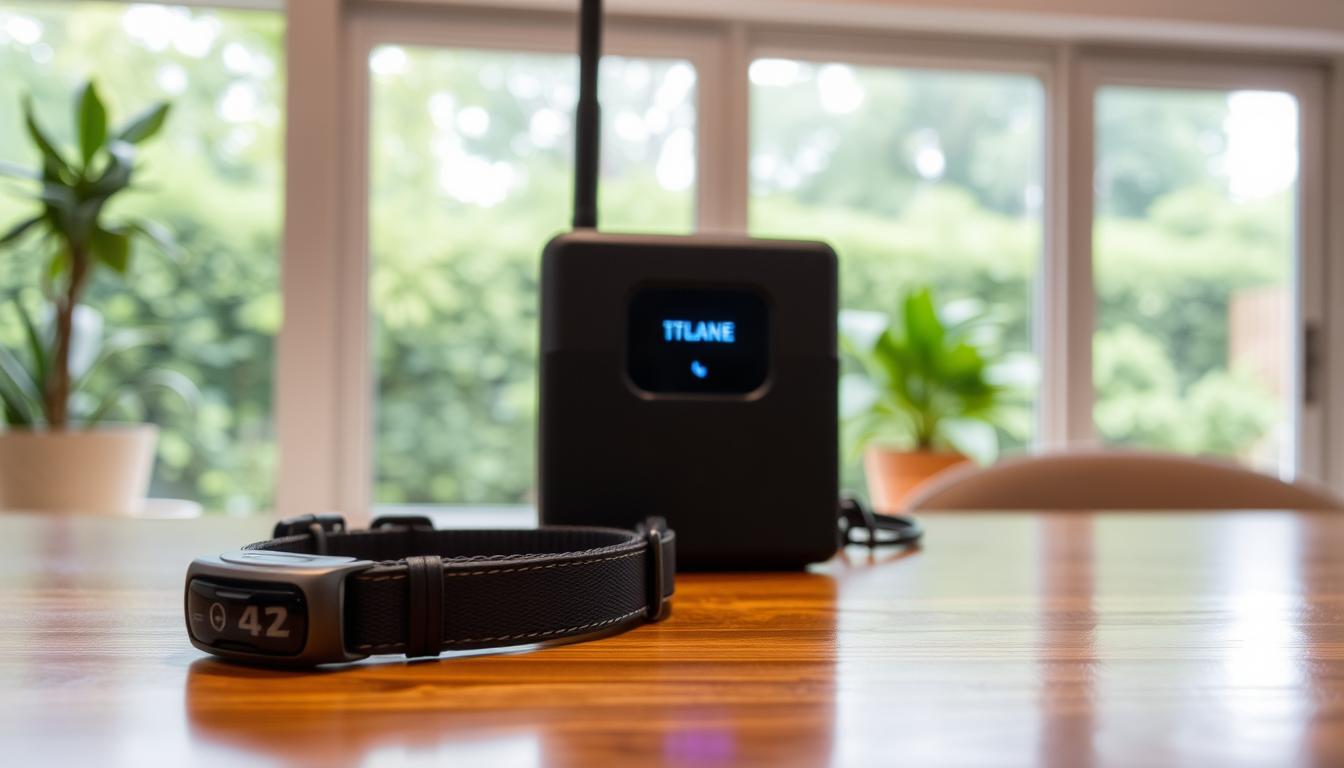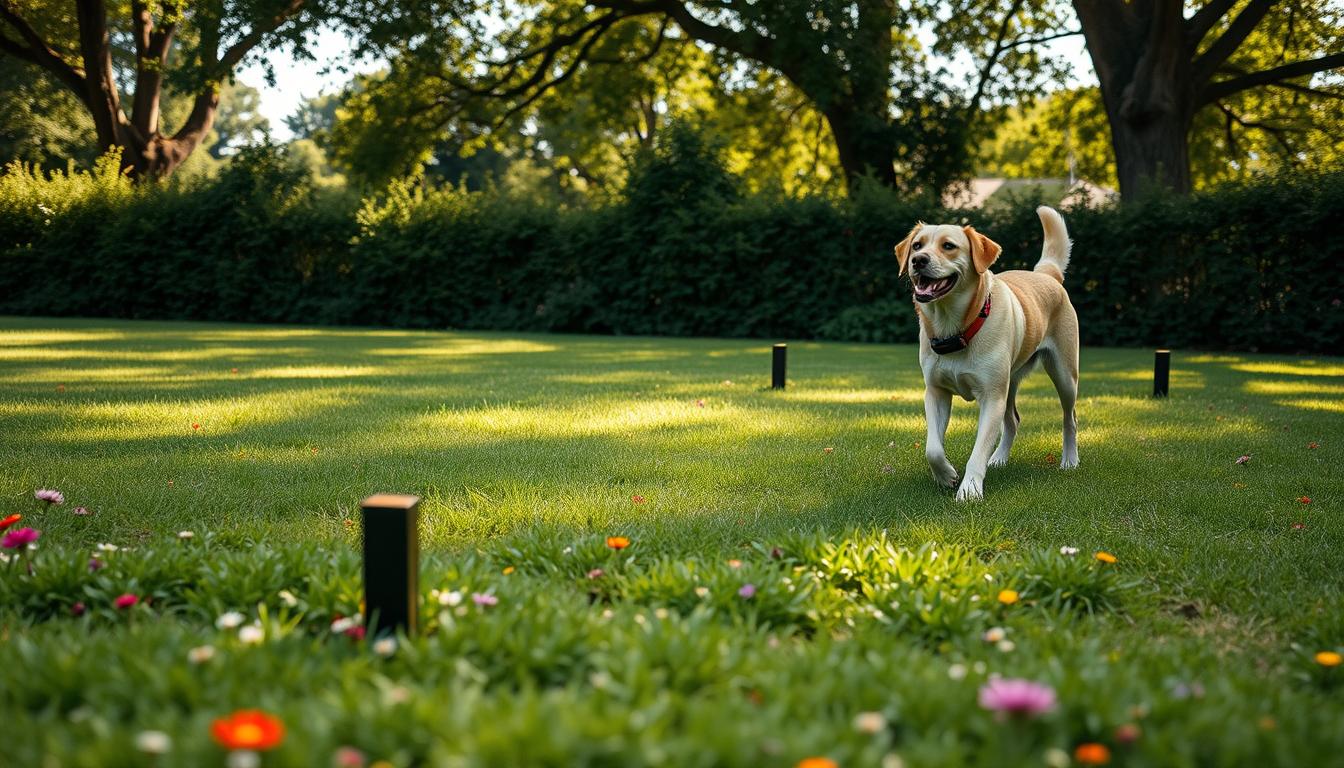Giving your dog the freedom to roam within your yard while keeping them safe is a top priority for many pet owners. Traditional physical fences can be effective but come with costs and labor. Invisible fences offer a convenient alternative, providing a boundary for your pet without the need for physical barriers.
These innovative systems allow your dog to enjoy the outdoors while maintaining the safety and integrity of your yard’s boundaries. By understanding how these systems work, you can make an informed decision about whether an invisible fence is right for you and your pet.
Key Takeaways
- Understand the basic principles of invisible fences and their benefits.
- Learn how these systems communicate with your dog through specialized collar receivers.
- Discover why many pet owners prefer invisible fences over traditional fencing.
- Address common concerns about safety and effectiveness.
- Understand the balance between giving your dog freedom and ensuring their safety.
Understanding Pet Containment Systems
The concept of pet containment systems revolves around creating a secure boundary for your dog without the need for physical fences. These systems are designed to give your dog the freedom to play and explore while ensuring their safety.
The Balance Between Freedom and Safety
A good pet containment system strikes a balance between giving your dog the freedom to roam and keeping them safe from potential dangers. With a wireless dog fence, you can create a safe and secure environment for your pet to enjoy the outdoors without the risks associated with traditional fencing.
Benefits of Invisible Fences Over Traditional Fences
Invisible fences offer several advantages over traditional physical fencing. For instance, they are more aesthetically pleasing as they don’t obstruct the view of your yard. They are also more effective in preventing dogs from escaping, as they can’t dig under or jump over the boundary. Additionally, invisible fences are often more cost-effective and easier to install than traditional fences.
Some of the key benefits of invisible fences include:
- Aesthetically pleasing, as they don’t disrupt the landscape
- More effective in containing dogs, as they prevent digging and jumping
- Cost-effective compared to traditional fencing options
- Easy to install, with no need for digging or burying wires
Here’s a comparison of the key features of invisible fences and traditional fences:
| Feature | Invisible Fences | Traditional Fences |
|---|---|---|
| Aesthetic Appeal | Maintains yard view | Can obstruct yard view |
| Effectiveness | Prevents digging and jumping | Can be breached by digging or jumping |
| Cost | Generally more cost-effective | Can be expensive to install |
How Wireless Dog Fences Work
Understanding the mechanics behind wireless dog fences is crucial for pet owners looking to provide their dogs with freedom and safety. Wireless dog fences operate on a simple principle: they create an invisible boundary that keeps your dog within a designated area.
The Transmitter and Receiver System
The core of a wireless dog fence is the transmitter and receiver system. The transmitter sends out a radio signal that defines the boundary area. Your dog wears a receiver collar that detects this signal. When your dog approaches the boundary, the collar receives the signal and responds accordingly.
The transmitter is typically placed in a central location within your property. It broadcasts a signal in all directions, creating a circular boundary. The receiver collar is designed to be sensitive to this signal, alerting your dog when they are nearing the edge of the boundary.
Creating Boundaries and Safe Zones
One of the key benefits of wireless dog fences is their ability to create both boundaries and safe zones. The boundary is the outer limit of the area within which your dog can roam. If your dog tries to cross this boundary, the receiver collar will first emit an audible warning signal. If your dog continues, they will receive a static correction, a mild, harmless stimulation designed to get their attention.
- The system creates a “safe zone” where your dog can move freely without receiving any corrections.
- The boundary is adjustable, allowing you to customize the area based on your property and needs.
Static Correction and Warning Signals
The static correction is a critical component of the wireless dog fence system. It’s designed to be a harmless yet effective deterrent. When your dog approaches the boundary and receives a warning signal, it’s a cue for them to stop. If they continue and receive a static correction, it’s a mild sensation that startles them, teaching them to associate the boundary with the correction.
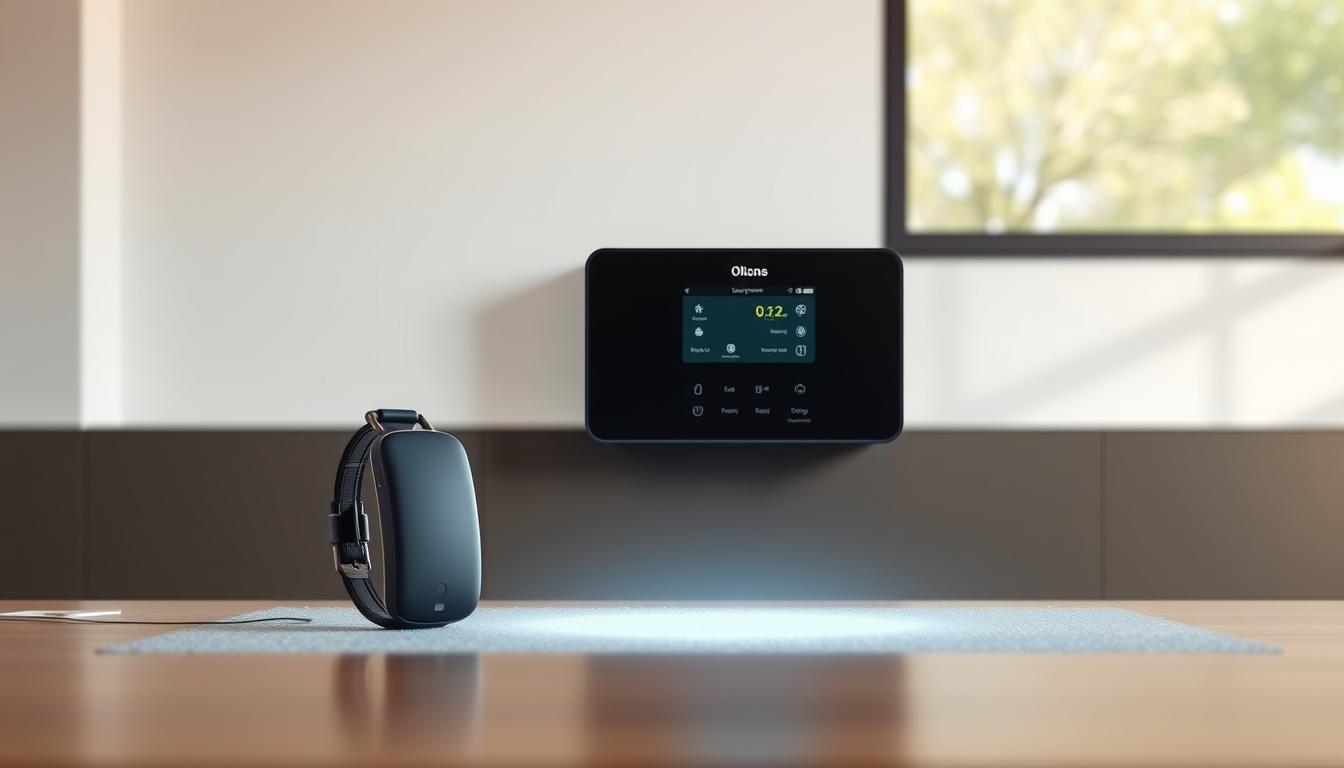
The progressive nature of the warning system, starting with an audible tone before any correction, helps your dog learn quickly. The static correction is not meant to cause pain or harm but to get your dog’s attention. Modern systems offer different levels of static correction, allowing you to choose the appropriate level for your dog based on their size, temperament, and sensitivity.
Types of Electronic Dog Fences
For pet owners, understanding the different types of electronic dog fences is crucial for making an informed decision. Electronic dog fences are not a one-size-fits-all solution; they come in various forms to suit different needs and environments.
Wired (In-Ground) Fence Systems
Wired or in-ground fence systems are a popular choice for pet owners who need a more permanent solution. These systems involve laying a wire around the perimeter of the area you want to secure.
Components and Installation
The components typically include a transmitter, the boundary wire, and a receiver on the dog’s collar. Installation can be more labor-intensive as it requires burying the wire around the desired containment area.
Coverage Area and Customization
Wired systems offer a high degree of customization, allowing you to create complex boundary shapes. The coverage area can be as large or as small as needed, making it a versatile option for many pet owners.
Wireless Fence Systems
Wireless fence systems, on the other hand, offer convenience and ease of setup. They use a central transmitter to create a circular containment zone around your pet.
Components and Setup
The main components include a transmitter unit and a receiver collar. Setting up a wireless fence is relatively straightforward, requiring minimal technical knowledge.
Coverage Limitations and Portability
While wireless systems are portable and easy to set up, they have limitations in terms of coverage area. The circular boundary may not always fit the shape of your yard or desired containment zone.
Multiple Transmitter Options
One way to overcome the limitations of wireless systems is by using multiple transmitters. This allows you to create a larger or more customized containment area by combining the coverage of several units, offering more options for pet owners.
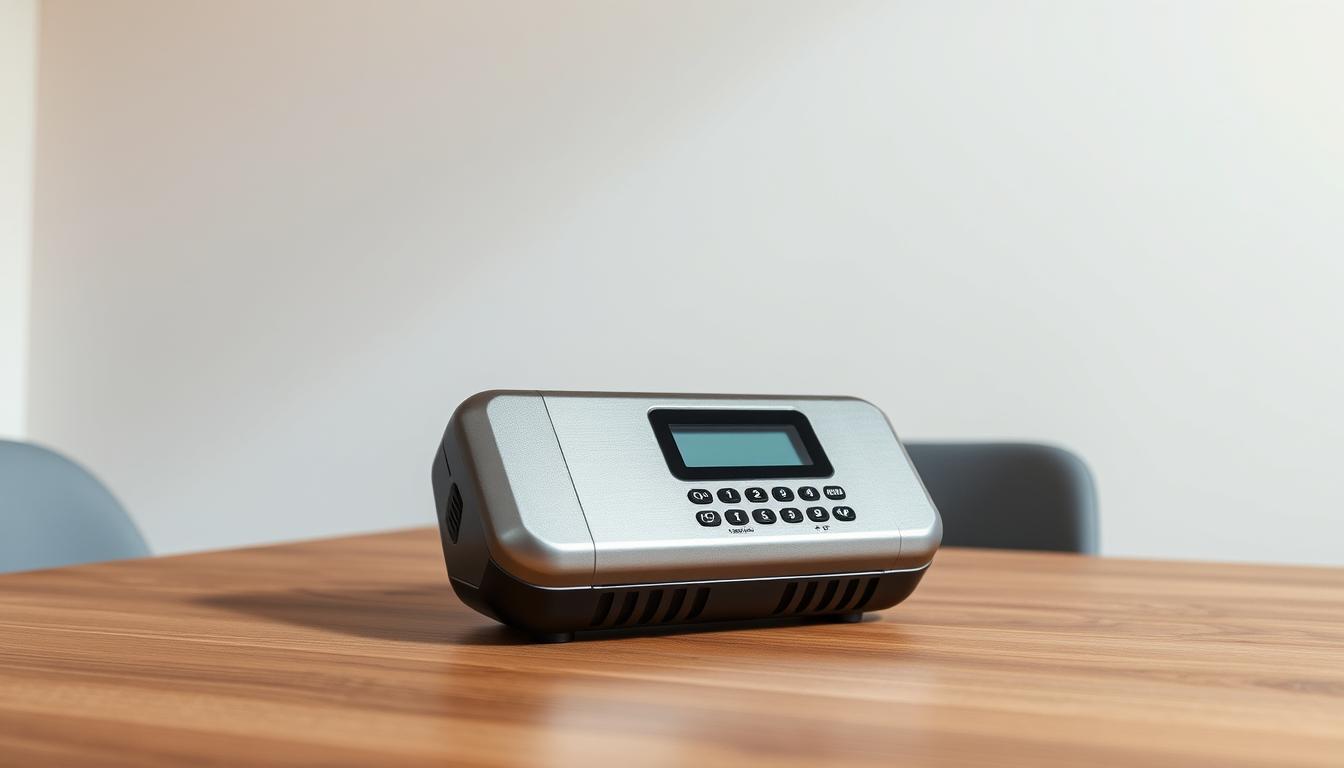
Training Your Dog to Respect the Boundaries
Teaching your dog to respect the wireless dog fence boundaries is a process that requires patience, consistency, and positive reinforcement. The goal is to train your dog to understand and respect the boundaries set by the fence, ensuring their safety and freedom within the designated area.
The Step-by-Step Training Process
The training process involves several steps that help your dog learn to stay within the boundaries. Initially, your dog will be introduced to the warning sounds and static corrections emitted by the fence. As they approach the boundary, they will receive a warning tone. If they continue, a static correction will be administered.
It’s crucial to reward your dog for stopping at the boundary, reinforcing positive behavior. Over time, your dog will learn to associate the warning tone with the need to stop, respecting the fence’s boundaries.
Using Visual Markers During Training
Visual markers, such as flags, are used during the initial training phases to help your dog visually identify the boundary. As your dog becomes more accustomed to the fence, these markers can be gradually removed.
Common Training Challenges and Solutions
Several challenges may arise during training, including dogs that are unresponsive to static correction or highly excitable dogs that ignore boundaries when distracted. To address these issues, it’s essential to remain patient and adjust the training process accordingly.
| Challenge | Solution |
|---|---|
| Unresponsive to Static Correction | Adjust the correction level or seek professional help. |
| Highly Excitable Dogs | Increase training sessions, focusing on calm behavior. |
| Fear Responses | Gradually introduce the fence, avoiding sudden corrections. |
Choosing the Right Wireless Dog Fence System
With numerous wireless dog fence systems available, choosing the right one requires careful consideration.
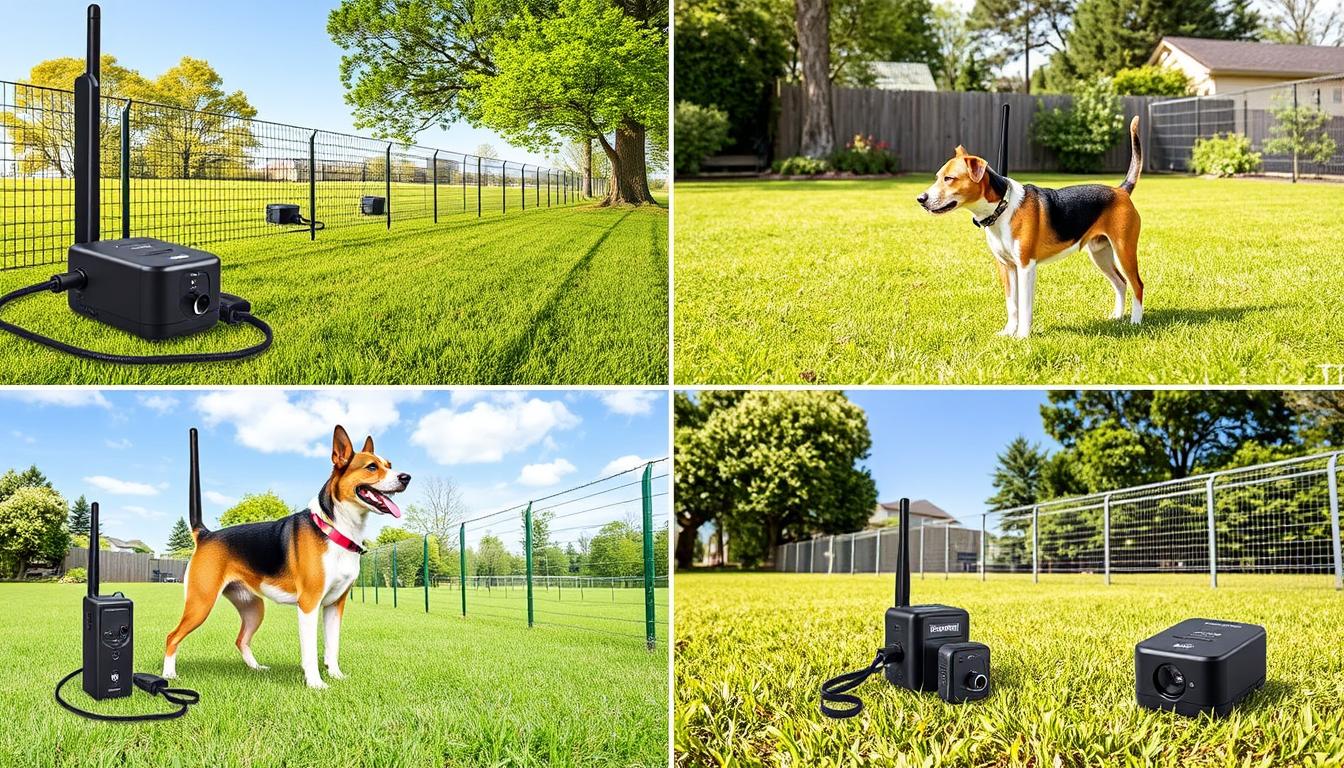
Key Features to Consider
When selecting a wireless dog fence system, consider the size of your property and the specific needs of your dog. For small dogs, a system like the PetSafe PIF-300 Wireless Pet Containment System is ideal, offering a 1/2-acre circular area of coverage and 5 levels of correction.
For larger properties or dogs with specific needs, other systems may be more appropriate.
Recommended Systems for Different Needs
For small dogs, the PetSafe PIF-300 is a top recommendation. For larger dogs or properties, consider the Dogtra E-Fence3500, an in-ground dog fence that covers up to 40 acres and features 8 levels of adjustable stimulation.
Conclusion
With the right wireless dog fence system, you can provide your dog with the freedom to enjoy the outdoors while maintaining their safety. This guide has covered the key aspects of wireless dog fences, including how they work, the different types available, and the importance of proper training. By choosing a suitable system and following a step-by-step training process, you can ensure your dog adapts quickly to the new boundaries.
Investing in a quality wireless dog fence can give you peace of mind and provide your pet with years of freedom and enjoyment. Take the next step in researching specific systems to find the one that best suits your needs and start giving your dog the gift of a safe and happy outdoor experience.
FAQ
What is the range of a typical wireless dog fence system?
The range of a wireless dog fence system varies depending on the model and brand, but most systems cover areas between 1/3 acre to 1 acre or more. Some systems, like those from PetSafe, offer adjustable range options to suit your yard size.
How do I know if my dog is receiving the correction signal?
You can test the receiver collar by approaching the boundary with your dog wearing the collar. If the system is working correctly, your dog should receive a warning signal followed by a static correction if they continue towards the boundary.
Can I use a wireless dog fence system for multiple dogs?
Yes, many wireless dog fence systems are designed to accommodate multiple dogs. You can purchase additional receiver collars and pair them with the same transmitter, making it a convenient option for households with multiple pets.
Will the static correction harm my dog?
The static correction is designed to be a safe and humane deterrent. It’s not intended to cause pain or harm, but rather to startle your dog and discourage them from crossing the boundary. The correction is also adjustable, allowing you to customize the level to suit your dog’s temperament.
Can I install a wireless dog fence system myself?
Yes, most wireless dog fence systems are designed for DIY installation. The process typically involves placing the transmitter in a central location, setting the boundary, and adjusting the receiver collar to the correct fit for your dog.
How long does it take to train my dog to respect the boundaries?
The training time may vary depending on your dog’s breed, age, and temperament. On average, it takes around 2-4 weeks of consistent training for your dog to learn the boundaries and respect the correction signal.



